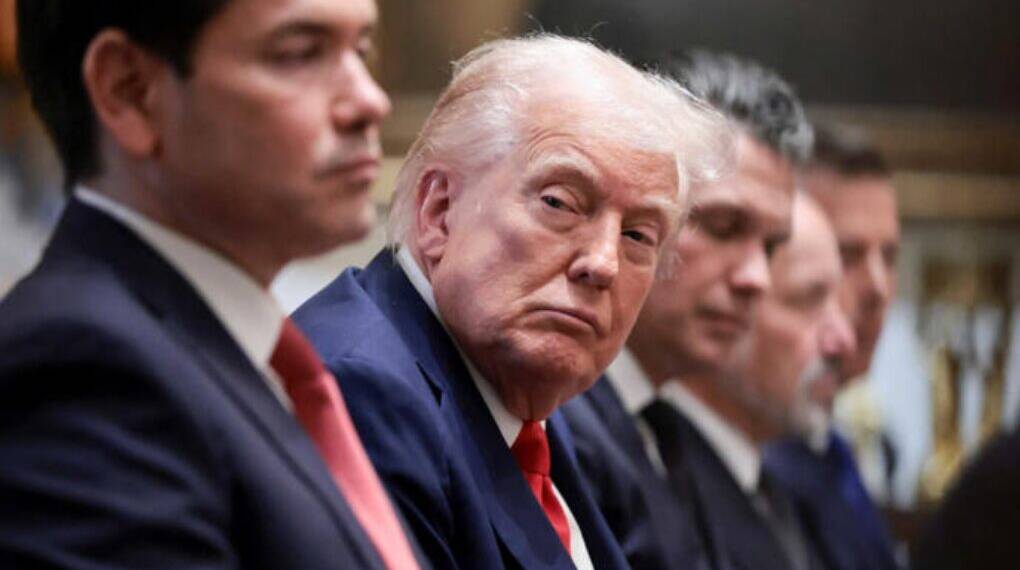Observers across the political spectrum were left stunned after a new report revealed that former U.S. President Donald Trump plans to send about 200 American troops to Israel. The deployment is intended to support ceasefire monitoring operations amid the ongoing war between Israel and Hamas, which has raged for nearly two years.
According to The Associated Press, the move comes as part of Washington’s effort to strengthen on-ground coordination for humanitarian relief and regional stability. The U.S. Central Command (CENTCOM) is reportedly preparing to establish a “civil-military coordination center” in Israel, designed to facilitate the flow of humanitarian aid, logistics, and security assistance into conflict-hit areas.
However, the Pentagon made it clear that no American troops will be stationed directly inside Gaza, where the most intense fighting continues. Instead, the troops will be based in Israeli territory, primarily focusing on oversight, coordination, and non-combat roles related to ceasefire enforcement and aid delivery.
A Controversial Move Amid War Fatigue
Trump’s decision has reignited fierce debates across the United States about Washington’s role in Middle Eastern conflicts. Many Americans—especially among his own voter base—had hoped that Trump would maintain his long-standing promise to end America’s “forever wars.”
Instead, critics argue that this new deployment signals a deeper entanglement in the volatile region. While the White House insists the operation is limited and non-combative, foreign policy experts warn that even small deployments can escalate into broader military commitments over time.
“This is how it always begins—small numbers, ‘temporary missions,’ and before you know it, thousands are stationed there,” remarked one analyst on CNN.
Political Reactions: “MAGA Is Learning the Hard Way”
The announcement sparked immediate backlash on social media. Prominent political figures, military veterans, and commentators expressed skepticism and frustration over the move.
Democratic strategist Max Burns wrote on X (formerly Twitter):
“Wow, U.S. boots on the ground in Gaza.”
While the report clarified that troops won’t actually enter Gaza, the symbolic weight of American soldiers being deployed to Israel during an active war sent shockwaves through political circles.
Attorney Jeffrey Gold sarcastically commented:
“The U.S. to establish a military command in the Gaza Strip. What could go wrong?”
Conservative voices were equally critical. Timothy Naegel, former counsel for the Senate Banking Committee and a self-professed Trump voter, lamented:
“Instead of exiting the region, Trump is digging us in deeper. Lots of us voted for him three times, but vigorously oppose this!”
Military veteran Evaristus Odinikaeze was even more direct in his criticism:
“MAGA is finding out that they indeed voted for endless wars. Now they’re going to deploy to fight Netanyahu’s battles. It starts with 200 troops—none of whom would include Trump’s sons. Gradually, it will increase. Hopefully Abbott sends his fascist army too.”
A Strategic or Political Calculation?
Analysts are divided on the motives behind the deployment. Supporters argue that Trump’s move demonstrates strategic foresight, aimed at maintaining U.S. influence and ensuring that the fragile ceasefire efforts between Israel and Hamas don’t collapse.
“Given the regional volatility, U.S. presence—even minimal—could act as a stabilizing force,” said a former Pentagon official. “It signals commitment to peace and deterrence against renewed escalation.”
However, critics see it differently. Many view the move as a politically motivated attempt to project strength and reassert American leadership in the Middle East—particularly as Trump positions himself for the upcoming presidential race. By appearing proactive on global security, Trump may seek to counter narratives that label him as isolationist or anti-interventionist.
The Shadow of Past Conflicts
The decision evokes memories of U.S. involvement in Iraq, Afghanistan, and Syria—conflicts that began with limited deployments and gradually expanded into costly, long-term wars. Public sentiment in the U.S. has shifted sharply against such entanglements, especially after two decades of global military commitments that drained resources and cost thousands of American lives.
As one veteran commented online, “It starts with humanitarian coordination, then advisors, then protection units. Before long, it’s boots on the ground—and body bags coming home.”
A Risky Gamble for Trump
Whether this small deployment becomes a defining foreign policy moment or a political misstep remains to be seen. But one thing is clear: Trump’s move has fractured parts of his own base, reigniting debates over America’s global role and the true meaning of “America First.”
As the ceasefire monitoring mission takes shape, the world will be watching closely. For now, what was meant to be a symbol of peacekeeping and humanitarian support has instead become a flashpoint—reviving America’s old ghosts of interventionism and the haunting question: Will the U.S. ever truly leave the Middle East behind?








